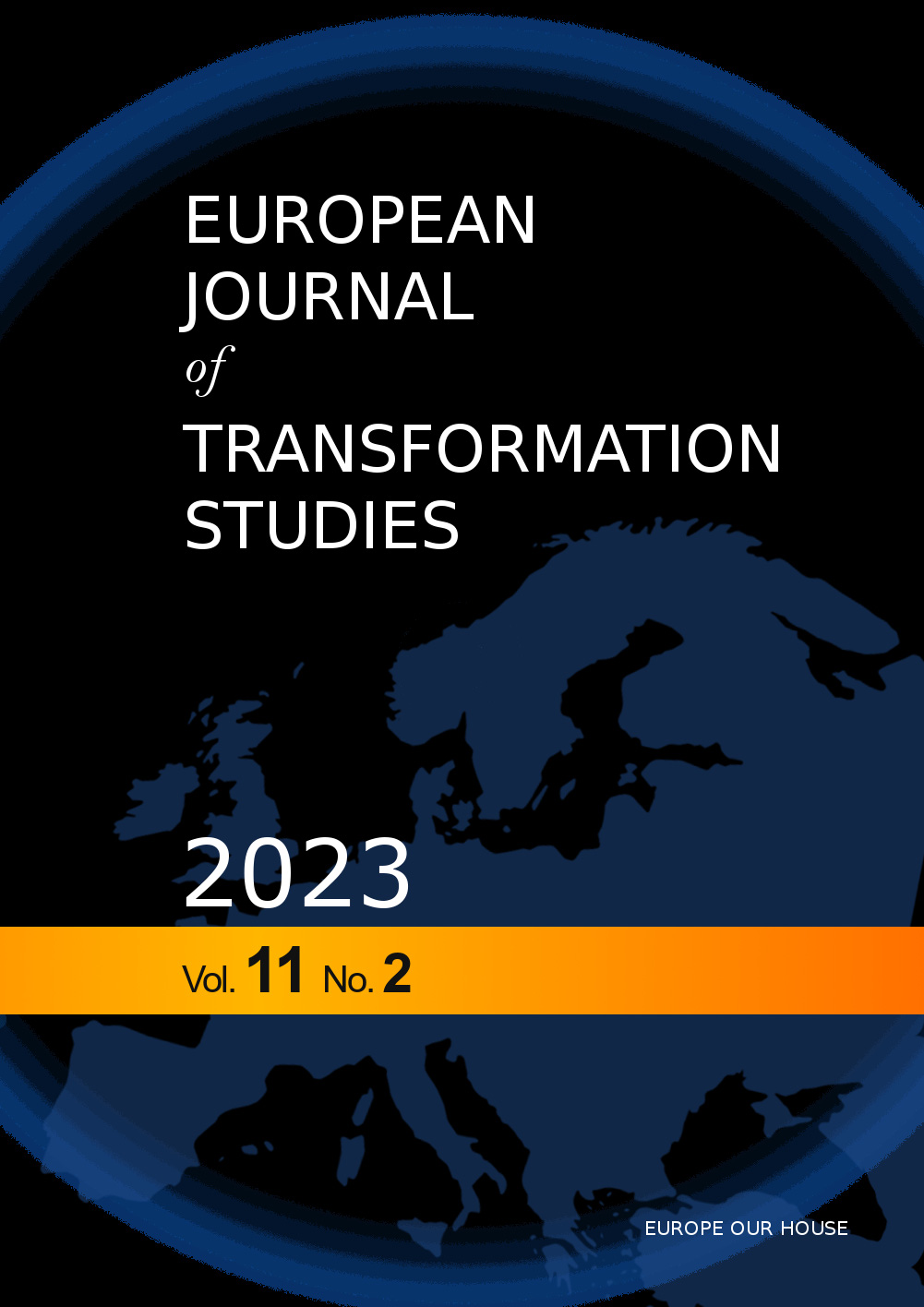Decoding The Transformation Of Three Decades Of Ai Research: A Social Science Perspective
Słowa kluczowe:
Artificial Intelligence, Social Sciences, Scientific Research, TransformationAbstrakt
This article discusses the dynamics of developing scientific publications related to artificial intelligence research. Based on the comparison of 20 research documents studied using the sigmoid analysis method, the paper determines the dynamics of publications and research methods related to artificial intelligence. The paper aims to study the nature of AI-related publications from the social and political science perspective and to determine the transformation of development dynamics.
Downloads
Bibliografia
Agrawal, A., Gans, J. S., & Goldfarb, A. (2019). Artificial intelligence: the ambiguous labor market impact of automating prediction. Journal of Economic Perspectives, 33(2), 31–50.
Allam, Z., & Dhunny, Z. A. (2019). On big data, artificial intelligence and smart cities. Cities, 89, 80–91.
Campbell-Kelly, M., & Garcia-Swartz, D. D. (2013). The history of the internet: the missing narratives. Journal of Information Technology, 28(1), 18–33.
Cataleta, M. S. (2020). Humane Artificial Intelligence The Fragility of Human Rights Facing AI. East-West Center.
Chen, H. (2009). AI, e-government, and politics 2.0. IEEE Intelligent Systems, 24(5), 64–86.
Curran, J. (2012). Reinterpreting the internet. Misunderstanding the Internet, 3, 33.
De Spiegeleire, S., Maas, M., & Sweijs, T. (2017). Artificial intelligence and the future of defense: strategic implications for small-and medium-sized force providers. The Hague Centre for Strategic Studies.
De Spiegeleire, S., Maas, M., & Sweijs, T. (2017). Artificial intelligence and the future of defense: strategic implications for small-and medium-sized force providers. The Hague Centre for Strategic Studies.
Devedžić, V. (2004). Web intelligence and artificial intelligence in education. Journal of Educational Technology & Society, 7(4), 29–39.
DiMaggio, P., Hargittai, E., Neuman, W. R., & Robinson, J. P. (2001). Social implications of the Internet. Annual review of sociology, 27(1), 307–336.
Etzioni, A., & Etzioni, O. (2017). Should artificial intelligence be regulated?. Issues in Science and Technology (issues. org), Summer.
Fiott, D., & Lindstrom, G. (2018). Artificial Intelligence: What Implications for EU Security and Defence?
Floridi, L. (2020). AI and its new winter: From myths to realities. Philosophy & Technology, 33, 1–3.
Franke, U. (2019). Harnessing artificial intelligence.
Heller, C. H. (2019). Near-term applications of artificial intelligence. Naval War College Review, 72(4), 73–100.
Henley, T. B. (1990). Natural problems and artificial intelligence. Behavior and Philosophy, 43–56.
Hershock, P. D. (2020). Humane Artificial Intelligence: Inequality, Social Cohesion, and the Post-Pandemic Acceleration of Intelligent Technology. East-West Center.
Hunter, A. P., Sheppard, L. R., Karlen, R., & BALIEIRO, L. (2018). Adoption of Artificial Intelligence. ARTIFICIAL INTELLIGENCE AND NATIONAL SECURITY: THE IMPORTANCE OF THE AI ECOSYSTEM, 24–34.
Johnson, J. S. (2020). Artificial intelligence. Strategic Studies Quarterly, 14(1), 16–39. Kasapoğlu, C. (2019). Wars of none: artificial intelligence and the future of conflict.
Kavanagh, C. (2019). New tech, new threats, and new governance challenges: an opportunity to craft smarter responses?. Carnegie Endowment for International Peace.
Lea, G. R. (2020). Constructivism and its risks in artificial intelligence. Prometheus.
McCarthy, J., Minsky, M. L., Rochester, N., & Shannon, C. E. (2006). A proposal for the dartmouth summer research project on artificial intelligence, august 31, 1955. AI magazine, 27(4), 12–12.
McPherson, S. S. (2009). Tim Berners-Lee: Inventor of the World Wide Web. Twenty-First Century Books.
Nath, K., Dhar, S., & Basishtha, S. (2014, February). Web 1.0 to Web 3.0-Evolution of the Web and its various challenges. In 2014 International Conference on Reliability Optimization and Information Technology (ICROIT) (pp. 86–89). IEEE.
Price, M., Walker, S., & Wiley, W. (2018). The machine beneath: Implications of artificial intelligence in strategic decision making. PRISM, 7(4), 92–105. Retrieved from https://www.jstor.org/stable/10.2307/26542709.
Rossi, F. (2018). Building trust in artificial intelligence. Journal of international affairs, 72(1), 127–134.
Rubin, C. T. (2003). Artificial intelligence and human nature. The New Atlantis, (1), 88–100.
Statista. (2023). Digital population worldwide as of October 2023 [Data set]. Statista. https://www.statista.com/statistics/617136/digital-population-worldwide/.
Tyner, K. (2014). Literacy in a digital world: Teaching and learning in the age of information. Routledge.
Vempati, S. S. (2016). India and the artificial intelligence revolution (Vol. 1). Washington (DC): Carnegie Endowment for International Peace.

 Uniwersyteckie Czasopisma Naukowe
Uniwersyteckie Czasopisma Naukowe



